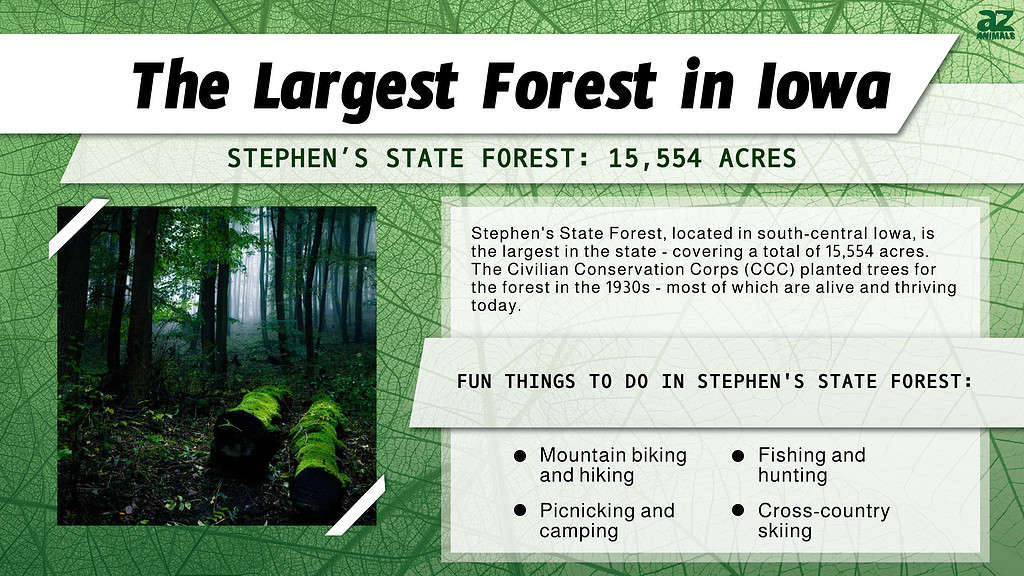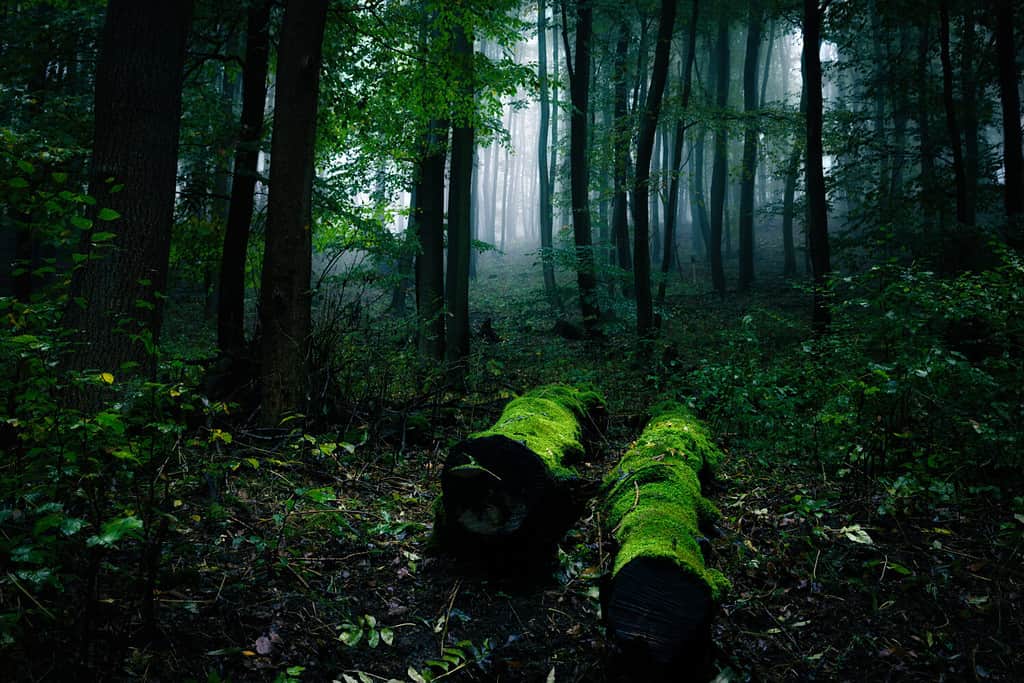
Outdoor enthusiasts in Iowa and from other parts of the world flock to the largest forest where they can enjoy a wide range of recreational activities across thousands upon thousands of acres. Although some natural environments have more to offer in the way of facilities and amenities, the largest forest in Iowa is a bit different, offering more of a true outdoor experience for those who appreciate the austere aspects of nature. Below, we discover which forest made it to the top of the list and identify the three other large forests found throughout the state of Iowa.
The Largest Forest in Iowa
The largest forest in Iowa is Stephen’s State Forest located in the south-central portion of the state. Stephen’s State Forest covers a total of 15,554 acres. It is the largest of all state forests to cover such a vast geographical region. In Iowa, it spreads through several counties, including Davis, Appanoose, Monroe, Clarke, and Lucas Counties. Here, there is a variety of habitats as well as opportunities for recreational activities.
This forest was developed with an important purpose in mind. The citizens of Iowa now look to it as a great illustration of forest management. In the later part of the 1930s, the Civilian Conservation Corps (CCC) took action, planting trees through the forest — most of which are currently alive and thriving. 20 years later, there was pressure for recreational opportunities, and today, the terrain allows for outdoor fun in an intentionally and delicately developed environment.

Stephen’s State Forest is the largest forest in Iowa.
©ohenze/Shutterstock.com
Fun Facts About Stephen’s State Forest
At Stephen’s State Forest, you can find over 59 different types of trees. Forestry work together with research-based plantings creates the largest forest in Iowa, making it a unique attraction to discover ponderosa pine, bald cypress, and other one-of-a-kind species. In total, there are 31 miles of trails, allowing you to enjoy hiking and other activities to your heart’s content. During springtime, wildflowers create an enchanting experience and when there’s snow, it’s a winter wonderland.
What to Do at Stephen’s State Forest
Throughout Stephen’s State Forest, the environment is exacting, which visitors need to plan for. Most of the recreational activities are found in the Lucas Unit, the Whitebreast Unit, and the Woodburn Unit. Some of the activities you can partake in include:
- Wildlife watching
- Equestrian riding
- Cross-country skiing
- Picnicking and camping
- Mountain biking and hiking
- Fishing and hunting
- Snowmobiling
At the Lucas Unit, you can enjoy three campgrounds and two ponds. There are also five miles of trails to explore. At the Whitebreast Unit, there is a group camp area, three equestrian campgrounds, and two ponds. There are more opportunities here as well, with 20 miles of multi-use trails to explore. The Woodburn Unit houses five backcountry campgrounds and six miles of backpacking trails.
For an even more rugged outdoor trip, you can visit the Cedar Creek Unit, the Chariton Unit, the Thousand Acres Unit, or the Unionville Unit. These areas do not have any developed facilities, but you can still head out to enjoy activities like wildlife watching, hiking, and hunting if you’re up for the challenge.

Camping is just one of the activities people participate in at the largest forest in Iowa.
©iStock.com/anna avdeeva
Wildlife Found in Stephen’s State Forest
Several animal species call Stephen’s State Forest home. You can find a variety of small animals, including muskrats, opossums, beavers, skunks, woodchucks, cottontail rabbits, raccoons, and fox squirrels. Some of the medium-sized animals include coyotes and gray foxes and you can also find whitetail deer throughout the forest.
There are several different types of non-venomous snakes throughout the forest and venomous snakes like copperheads and rattlesnakes are extremely uncommon. There are also some game birds in the forest that include pheasants, quails, and wild turkeys. Hunters should review regulations, limits, and hunting zones before visiting the forest to hunt game birds or deer. In Iowa, there are several fish species including catfish, sunfish, trout, pike, minnow, and suckerfish.
3 Other Large Forests in Iowa
The second largest forest is in west central Iowa. The Loess Hills State Forest covers a total of 10,600 acres in Harrison and Monona Counties and is the newest of the bunch. This forest incorporates a mix of habitats including savannas, prairies, and forests just above the Missouri River. The third largest forest is in southeast Iowa and covers 9,148 acres in both Van Buren and Lee Counties. This natural resource is comprised of planted pines and oak-hickory forests. The fourth largest forest in Iowa is the Yellow River State Forest. This one is located in the northeast portion of the state and spans 8,999 acres. Here, the land is mountainous and steep and includes streams, prairies, and forests. Like Stephen’s State Forest, this is a popular location for recreational activities, including mountain biking, backpacking, fishing, hunting, and hiking.
Where is Stephen’s State Forest Located on a Map?
Stephens State Forest, situated in the south-central region of Iowa, holds the distinction of being the largest state forest in the state. Comprising seven units spread across five counties, this expansive forest covers a vast area of over 15,500 acres. Its diverse landscape and natural features make it a popular destination for outdoor enthusiasts, offering opportunities for hiking, wildlife observation, and other recreational activities.
Here is Stephen’s State Forest on a map:
The photo featured at the top of this post is © iStock.com/audioundwerbung
Thank you for reading! Have some feedback for us? Contact the AZ Animals editorial team.






